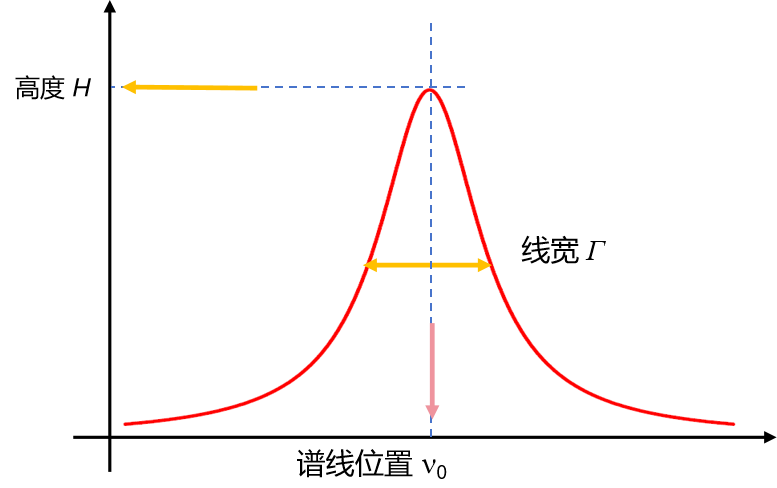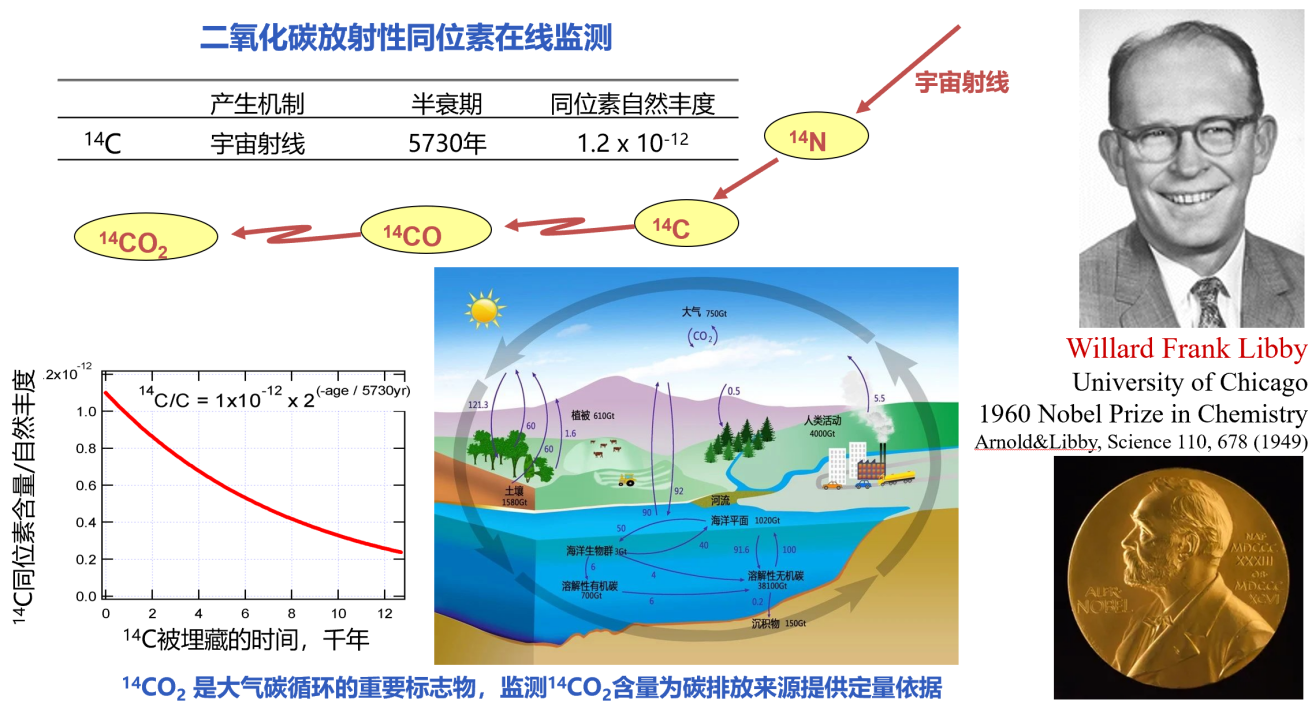Precision Spectroscopy of Atmospheric Molecules
From Big Spectral Data to Trace Detection
The spectroscopic study of atmospheric molecules on Earth and other planets is fundamental to understanding atmospheric absorption, chemical processes, and astronomical observations. Laser-based high-sensitivity spectroscopic detection techniques, with their advantages of non-contact operation, high precision, and high sensitivity, have become core technologies in applications such as trace gas analysis and environmental monitoring. With the rapid development of laser technology, optical detection methods are increasingly becoming mainstream in related fields.
Our laboratory has long been dedicated to developing laser-based high-sensitivity spectroscopic techniques, acquiring vast amounts of spectral big data, conducting fundamental research on atomic and molecular structures and dynamics, and promoting their practical applications in climate science, astronomy, combustion, and other fields. Current research directions include:
High-Sensitivity Laser Spectroscopic Detection Technology
Using optical cavity enhancement and precision laser frequency-locking techniques, we achieve molecular spectroscopic measurements with kHz-level or even higher precision. The obtained high-precision spectral data serve as critical experimental benchmarks for theoretical models and can even be used for precise determination of fundamental physical constants. By analyzing molecular absorption line positions, intensities, and linewidths, we can resolve vibrational energy level parameters, validate higher-order quantum effects, identify internal molecular perturbations, and study molecule-environment interactions (e.g., absorption cross-sections).
Application of Cavity Ring-Down Spectroscopy (CRDS) in Trace Gas Detection
Leveraging the high sensitivity and precision of CRDS, we conduct rapid, real-time field monitoring of atmospheric molecules (e.g., H₂O, CO₂, NOₓ) and aerosols. In recent years, this technology has advanced rapidly in meteorological and environmental monitoring. Based on this method, we have successfully developed scientific instruments for long-term stable monitoring of background atmospheric greenhouse gas concentrations, aiming to reduce reliance on foreign counterparts and promote the development and application of domestically produced scientific instruments.
Application of Cavity-Enhanced Raman Spectroscopy (CERS) in Complex Mixture Detection
The CERS method enables kilowatt-level Raman signal enhancement within the cavity under mW-level low-power laser pumping, significantly improving detection sensitivity. Combined with the polarization resolution capability of Raman signals, this method achieves rapid and trace detection of multi-component gases with sub-ppm sensitivity. Particularly for background atmospheric hydrogen detection, the detection limit can be as low as 20 ppb. This technology shows broad application prospects in natural sciences, medical diagnostics, and industrial gas monitoring. Based on this, we are developing scientific instruments for rapid breath gas detection and high-performance equipment for trace component detection under background atmospheric conditions, aiming to promote the deep integration and innovative application of this technology in both cutting-edge research and practical detection.
Molecular Spectral Database Construction
Both infrared absorption spectroscopy and Raman spectroscopy are key technologies for resolving molecular vibrational characteristics from different dimensions. Infrared spectroscopy, based on molecular light absorption, is sensitive to changes in dipole moments during vibrations and excels at detecting polar bonds and asymmetric vibrations. Raman spectroscopy, based on inelastic light scattering, is sensitive to changes in molecular polarizability and is more suitable for symmetric structures and non-polar bonds. The two methods are strictly complementary: infrared captures asymmetric vibrations, while Raman reveals symmetric modes. Especially for molecules with symmetric centers, their infrared and Raman activities are mutually exclusive, with almost no spectral overlap, together forming an "orthogonal dual perspective" of vibrational spectroscopy.
Our laboratory, with cavity enhancement technology at its core, simultaneously develops high-sensitivity infrared absorption and cavity-enhanced Raman spectroscopy (CERS), committed to building an intelligent molecular spectral database for the AI era. We not only pursue extreme precision and multi-dimensional integration of spectra but also explicitly aim to serve AI-driven research paradigms. By systematically generating multi-modal, high-resolution, and well-annotated spectral benchmark data, we provide a solid and reliable training foundation and validation standard for AI chemist models.
These data will directly empower AI in molecular fingerprint identification, dynamic reaction tracking, intelligent unknown substance determination, and inverse molecular design, significantly enhancing the generalization and reasoning capabilities of models in complex environments and advancing spectroscopy from "manual interpretation" to "intelligent cognition." We strive to establish the laboratory as a foundational platform for AI and spectroscopy integration and innovation, promoting the development of next-generation chemical intelligence models through high-quality data and providing an open and reliable spectral intelligence foundation for environmental monitoring, astrochemistry, automated synthesis, and other fields.
Laser-Based Trace Detection of Atmospheric 14CO2
14C is a carbon isotope produced by cosmic rays (half-life: 5,730 years) and is widely used in geochronological dating due to its regular decay characteristics. In recent years, ¹⁴C has become a key tracer for distinguishing carbon emission sources: fossil fuels, due to their extremely long burial time, contain no 14C in their combustion-released CO2, whereas biogenic CO2 (e.g., respiration, biodegradation) still contains natural levels of 14C. Thus, by measuring the 14C content in atmospheric CO2, the contribution of fossil fuel carbon emissions can be precisely quantified.
Currently, 14C measurement primarily relies on accelerator mass spectrometry (AMS). Although this technology offers high precision, it depends on large accelerator facilities, involves high equipment and maintenance costs, requires complex sample pretreatment (e.g., converting CO2 to graphite), and has long measurement cycles. Almost all AMS equipment in China is imported, making cost and timeliness major bottlenecks. The "Laser Trace Detection and Precision Measurement" laboratory at the University of Science and Technology of China is dedicated to developing high-sensitivity detection technologies for atmospheric ¹⁴CO₂ and has successfully developed a novel dual-wavelength spectroscopic measurement method. The principle of our dual-wavelength technology is intuitive: traditional single-wavelength methods are susceptible to interference from other molecules, whereas this technology uses two beams of light working synergistically—one locks onto the target molecule, and the other probes absorption. The target molecule must absorb two photons to generate a signal, significantly improving selectivity. Combined with real-time background subtraction via pump light switching, zero-interference detection is achieved, greatly enhancing sensitivity and anti-interference capabilities.
This technology offers higher sensitivity and accuracy, easier equipment maintenance, and supports real-time monitoring in multiple scenarios, providing a novel solution for real-time high-precision detection of atmospheric 14C isotopes. Beyond atmospheric monitoring, this technology also holds broad application prospects in geological, hydrological, and other fields, with a potential market value of tens of billions.



